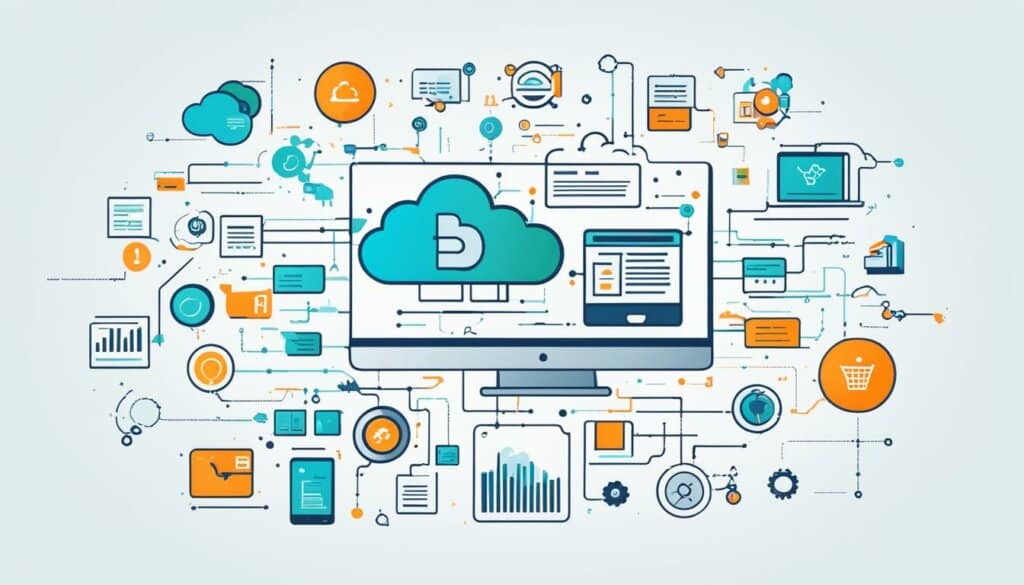Table of Contents
In today’s digital era, the world of online trading has expanded its reach to the business sphere. With the majority of buyers and sellers gravitating towards digital self-service and remote human engagement, B2B sales have undergone a significant transformation. This shift has resulted in the emergence of B2B e-commerce as one of the fastest-growing sales models, reshaping the way businesses conduct transactions.
As B2B customers increasingly demonstrate their willingness to invest substantial amounts through online sales channels, it is essential for businesses to adopt the best practices in B2B e-commerce. To navigate this dynamic landscape successfully, organizations must understand the nuances that differentiate B2B from B2C strategies, as well as embrace the 19 best B2B e-commerce strategies for 2023.
Continue reading Section 2 to explore what B2B e-commerce entails and how it differs from its B2C counterpart.
What Is B2B Ecommerce?
B2B ecommerce is a thriving sector that involves the sale of products or services between businesses through an online sales portal. In this digital landscape, manufacturers, wholesalers, and distributors engage in transactions to meet the needs of their respective industries.
Unlike B2C ecommerce, which focuses on consumer sales, B2B ecommerce operates in a different arena. B2B customers generally have different purchasing behaviors and motivations compared to individual consumers. The B2B buying cycle tends to be longer and emphasizes the establishment and maintenance of strong business relationships.
With the increasing digitalization of businesses, B2B customers are shifting their organizational purchasing online. This shift represents a fundamental change in how B2B companies conduct their business operations, allowing for greater efficiency and convenience.
The Advantages of B2B Ecommerce
B2B ecommerce offers several advantages for businesses involved in the sales and distribution of goods and services:
- Efficiency: Online sales portals streamline the purchasing process, reducing manual labor and allowing businesses to explore a broader range of products and suppliers.
- 24/7 Availability: With an online platform, businesses can conduct transactions at any time, catering to customers’ needs beyond traditional office hours.
- Greater Reach: B2B ecommerce enables businesses to expand their customer base beyond geographical limitations, breaking down barriers to international trade.
- Improved Data Analysis: Digital transactions leave a digital footprint, allowing businesses to collect and analyze data that provides valuable insights into customer behavior and preferences.
- Enhanced Customer Experience: B2B ecommerce platforms offer features that enhance the customer experience, such as personalized product recommendations and self-service options.
By embracing B2B ecommerce, businesses can capitalize on these advantages and stay competitive in the rapidly evolving digital marketplace.
| B2B Ecommerce | B2C Ecommerce |
|---|---|
| Targets businesses as customers | Targets individual consumers as customers |
| Emphasizes relationship building and personalized experiences | Focuses on attracting and converting individual customers |
| Longer buying cycle | Shorter buying cycle |
| Transactions occur between manufacturers, wholesalers, and distributors | Transactions occur between businesses and individual consumers |
As shown in the table above, B2B ecommerce operates with a different focus and set of dynamics compared to B2C ecommerce. Understanding these distinctions is crucial for businesses looking to enter or expand their presence in the B2B ecommerce sphere.
B2B Ecommerce Strategies Explained
B2B ecommerce strategies are essential for creating a seamless digital shopping experience that meets the needs of B2B customers. To enhance their online presence and drive sales, businesses must employ various tactics that prioritize convenience, information-rich content, self-service options, and secure online payment methods.
One of the key strategies is to provide information-rich content that educates customers about products, services, and industry trends. By offering detailed product descriptions, specifications, and supporting documentation, businesses can empower customers to make informed purchasing decisions.
Setting up self-service options is another effective strategy. B2B buyers often prefer the convenience of researching, comparing, and ordering products independently. By implementing user-friendly interfaces, intuitive navigation, and advanced search functionalities, businesses can empower customers to easily find relevant products and place orders without the need for human intervention.
Ensuring safe and secure online payment options is crucial in establishing trust and reducing friction in the buying process. Implementing robust payment gateways, encryption protocols, and fraud detection measures is essential for protecting customer data and ensuring seamless transactions.
B2B companies should aim to support the customer throughout the buying journey, addressing the information-intensive nature of the B2B buying process. This can be achieved by providing personalized recommendations, efficient order tracking, and responsive customer support.
In summary, successful B2B ecommerce strategies revolve around prioritizing the digital shopping experience, offering self-service options, and providing secure online payment methods. By implementing these strategies, businesses can enhance their competitive edge and position themselves for long-term success in the B2B marketplace.

How to Find New Customers and Increase Sales in B2B Ecommerce
B2B companies can effectively increase their sales and reach new customers by implementing targeted marketing strategies and defining their ideal customer profile and buyer personas. By understanding the needs and preferences of their target audience, businesses can develop personalized sales and marketing approaches that resonate with potential buyers.
One of the key tactics to find new customers in B2B ecommerce is to transform your website into an educational hub. By providing valuable content and resources related to your industry, you can position yourself as a thought leader and attract prospective customers who are seeking information.
Offering discounts and promotions is another effective strategy to entice new customers and boost sales. By providing incentives for first-time buyers or offering limited-time promotions, you can encourage potential customers to make a purchase and increase the chances of securing long-term relationships.
Creating a referral program can also be an effective way to acquire new customers. By incentivizing your existing customers to refer your products or services to their network, you can tap into their connections and expand your customer base organically.
Embracing search engine optimization (SEO) is crucial in improving your visibility and attracting new customers. By optimizing your website content and implementing SEO best practices, you can ensure that your business appears prominently in search engine results, increasing the chances of attracting relevant prospects.
Implementing customer relationship management (CRM) software can significantly enhance lead generation efforts. By leveraging technology-based approaches, such as automated lead nurturing and personalized email marketing, businesses can streamline their sales processes and effectively convert prospects into customers.
Increasing visibility through trade shows and social media is another effective way to find new customers and generate sales. Attending relevant industry trade shows allows businesses to showcase their products and network with potential buyers, while active participation on social media platforms can help businesses reach a wider audience and build brand awareness.
Effective Marketing Strategies to Find New Customers and Increase Sales:
- Transform your website into an educational hub
- Offer discounts and promotions
- Create a referral program
- Embrace search engine optimization (SEO)
- Increase visibility through trade shows and social media
- Utilize customer relationship management (CRM) software
Lead Generation with Technology-Based Approaches:
Technology plays a crucial role in enhancing lead generation in B2B sales. By leveraging automation, data analysis, and personalized communication, businesses can effectively nurture leads and convert them into customers. Here are a few technology-based approaches to consider:
- Implementing customer relationship management (CRM) software to track and manage leads
- Utilizing marketing automation tools to automate lead nurturing and follow-ups
- Employing data analytics to gain insights into customer behavior and optimize marketing strategies
- Utilizing artificial intelligence (AI) for intelligent lead scoring and predictive analytics
By adopting these strategies and leveraging technology, B2B companies can effectively find new customers and increase sales, ultimately driving business growth in the competitive ecommerce landscape.
Conclusion
To excel in B2B e-commerce, businesses should implement best practices that cater to customer expectations and drive revenue growth. One of the key factors is making the website visually appealing and user-friendly, creating an inviting online experience for customers. Detailed product descriptions are essential to provide comprehensive information and assist buyers in their decision-making process.
Moreover, ensuring a convenient checkout process is crucial for a seamless transaction. By streamlining the checkout flow and offering secure payment options, businesses can enhance customer satisfaction and reduce cart abandonment. Personalizing the customer experience further strengthens relationships, as businesses can tailor recommendations and offers based on individual preferences.
Optimizing B2B e-commerce for mobile devices is another important aspect. With the increasing use of smartphones and tablets for business-related activities, mobile responsiveness is vital to meet customer demands and provide a consistent experience across devices. Additionally, building an ecosystem with relevant technologies, such as customer relationship management (CRM) software, enables businesses to streamline operations and gain insights into customer behavior.
Continuous improvement is key in the ever-evolving B2B landscape. Businesses must stay updated on customer expectations and adapt their strategies accordingly. By leveraging analytics to track performance and gather insights, companies can make data-driven decisions to optimize their B2B e-commerce efforts. Embracing these best practices allows businesses to thrive in the competitive B2B e-commerce market and drive revenue growth.
FAQ
What is B2B e-commerce?
B2B e-commerce refers to the sale of products or services between businesses through an online sales portal. These sales occur between manufacturers, wholesalers, and distributors.
How is B2B e-commerce different from B2C e-commerce?
B2B e-commerce differs from B2C e-commerce in terms of the audience and intent of the sale. B2B has a longer buying cycle and emphasizes relationship building.
What are some B2B e-commerce strategies?
B2B e-commerce strategies focus on creating an engaging and efficient digital shopping experience for customers. These strategies include providing information-rich content, setting up self-service options, and ensuring safe and secure online payment options.
How can B2B companies find new customers and increase sales?
B2B companies can find new customers and increase sales by defining their ideal customer profile and buyer personas. Tactics include turning the website into an educational hub, offering discounts and promotions, creating a referral program, embracing search engine optimization (SEO), increasing visibility through trade shows and social media, and using customer relationship management (CRM) software.
What are some best practices for B2B e-commerce?
To excel in B2B e-commerce, businesses should make the website visually appealing and user-friendly, provide detailed product descriptions, ensure a convenient checkout process, personalize the customer experience, optimize for mobile devices, build an ecosystem with relevant technologies, and use analytics to track performance.







